Why Climate Change Could Wither Santa Barbara Agriculture
The End of the Land of Plenty

For 40 years, Richard Sanford has grown some of Santa Barbara’s most admired pinot noir wine grapes. A soft-spoken man who began his career in viticulture after returning from the Vietnam War in 1970, Sanford’s Alma Rosa winery stretches across 100 rolling acres in the Santa Rita Hills outside of Buellton. Admiration of Santa Barbara wine has grown alongside production, and Sanford is now modestly famous for being among the first to recognize that the transverse mountains of the Santa Ynez, Edna, and Santa Maria valleys were perfectly suited to Burgundy-style wine-growing. He also was an early proponent of sustainable, organic farming.
In a recent interview with The Independent, Sanford was asked about studies suggesting that the California wine industry may be threatened by climate change. A 2006 study published in the Proceedings of the National Academy of Sciences, for example, found that wine production in the state may decline by as much as 80 percent by 2100. Wine grapes, the study’s authors noted, are sensitive to unusually hot and cold temperatures, wind, weeds, and pests-all of which are expected to be intensified by global warming. Though many vintners, particularly in Napa and Sonoma counties, have said they fear that climate change will seriously harm their industry, Sanford was circumspect. “I don’t know that school’s out on what the effects of climate change will be,” he said. “There’s a lot of different speculation, and I don’t think anybody fully knows what’s going to happen.”
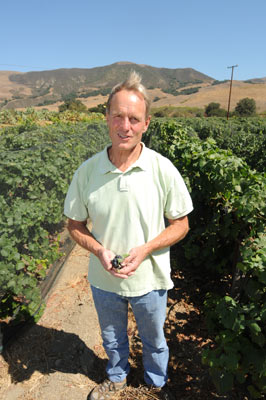
Like 73 percent of his fellow Americans (according to a recent Pew poll), Sanford believes that climate change is real, dangerous, and caused by humans. But his caution about what it may or may not do to California wine grapes reflects an awkward moment in the arc of public and political opinion about climate change.
Since Al Gore’s documentary An Inconvenient Truth launched global warming into the public imagination, Americans have heard increasingly dire predictions about the planet’s future. For example, the most recent assessment by the United Nation’s Intergovernmental Panel on Climate Change (IPCC)-the world’s most authoritative voice on global warming-found that it is 90-95 percent certain that the coming decades will see a substantial global increase in frequency and severity of drought, flooding, and extreme weather events.
An Inconvenient Truth didn’t make anyone’s list of the feel-good movies of 2006. But while viewers may have exited theaters dazed by visions of apocalyptic foreboding-Manhattan flooded; the polar ice cap melted-its timeline provided a measure of consolation. Climate change was an immediate problem, but its influence mainly would be felt in the future-coastal flooding would occur a century from now, droughts would descend in 2050.
But since summer 2006, the timeline Gore presented has shrunk. Virtually every day, new research is released detailing serious climatic changes that already are altering the biosphere and will intensify in decades, not centuries. And the evidence increasingly is manifest in daily life: Eleven of the last 13 years have been the hottest on record, and this summer or the next the North Pole may be ice-free, which hasn’t happened in 800,000 years.
“What’s scaring climate scientists is that things are happening much faster than they were predicting,” said Sharon Burke, an energy analyst for the Center for a New American Progress, a nonpartisan Washington, D.C.-based think tank. “Changes that had been projected to occur in a century now are expected by midcentury.”
Burke, who last fall helped write a widely discussed report on the threat climate change poses for American national security, continued, “I think Americans believe, without knowing it, that climate change is something that’s going to happen to someone else. It’s going to happen to Indonesians, or it’s going to happen to Bangladeshis, [and] it’s not going to happen to us. But it will. If you look at the predictions the IPCC has made, regions-especially in the West and Southwest-of the United States are going to be very hard hit.”
Santa Barbara, with its golden landscape and weather, seems as unlikely a target for violent climatic alterations as Peoria is for an Al Qaeda strike. But climate change has a much broader global reach than any terrorist organization, and there is good reason to believe that it eventually will prove to be the most destructive force humans have ever launched into the world. How and when will it begin changing our corner of the globe? It’s difficult to say, but one place to start looking is strawberries-and, for that matter, broccoli, wine grapes, lettuce, avocados, cattle, and anything else that South Coast farmers sell for profit.
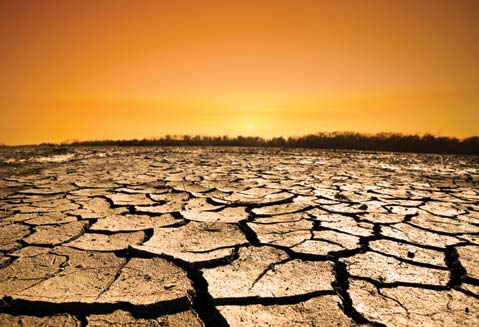
Golden Land No Longer?
When coastal Californians think about farming, they’re liable to think about the Midwest. Kansas is cornfields; California is Hollywood and Silicon Valley.
Numbers tell a different story. For 50 years running, California has been the number one agriculture state in the nation, producing more than half its produce. Last year, agriculture generated more than $100 billion in economic activity and provided one out of every 10 jobs statewide. And these statistics don’t take into account the enormous cultivation of marijuana, which is by far the state’s biggest cash crop.
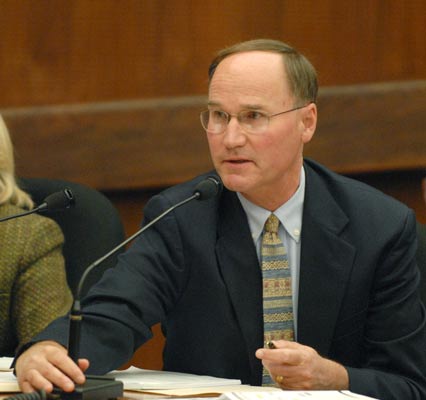
Santa Barbara is not one of California’s biggest agricultural producers, but measured against virtually every other part of the country, it’s an ag utopia. In 2007, crop revenue surpassed $1.1 billion-the highest figure ever. Bill Gillette, the county’s agriculture commissioner, conservatively calculated its overall effect on the Santa Barbara’s economy was somewhere in excess of $2.2 billion. That accounts for 10 percent of the total economy. It’s also a major source of tax revenue for the county government, which leans particularly hard on bed taxes supported by the booming wine tourism industry.
Farming in Santa Barbara County is not without challenges-ask a water-starved citrus farmer in Goleta about holding out against housing developers offering $200,000 an acre, and you’ll understand why-but the climate, the factor that counts most, is about as good as it gets anywhere in the world. “We have such an enchanted climate here,” said John Givens, a longtime Goleta Valley farmer and the proprietor of one the South Coast’s largest organic farms. “It’s warm and consistent. It really doesn’t change that much from summer to winter-maybe 10 or 15 degrees. Our climate is golden.”
The problem Givens and other regional farmers face is that in a climate that’s already golden, change is unwelcome. Unfortunately, a new report by the federal government says change is coming regardless. In The Effects of Climate Change on Agriculture, Land Resources, Water Resources, and Biodiversity in the United States, a 203-page review of existing studies issued last May, a team of scientists working for the U.S. Climate Change Science Program (CCSP) warn that global warming is going to seriously upset American agricultural production, damaging the Western states most.
Signed by three cabinet secretaries and issued to Congress by the U.S. Department of Agriculture (USDA), the CCSP report represents the most extensive examination of climate impacts on U.S. ecosystems published to date. It makes for disorienting reading. The Bush administration is well known for keeping a tight rein on climate research conducted under the auspices of the federal government, and so it is remarkable to see, in the report’s second paragraph, a simple declarative sentence warning that it is “very likely”-that is, 90-95 percent-that climate change will disrupt significantly American water supplies, agriculture, forestry, and ecosystems in the next 10 to 50 years.
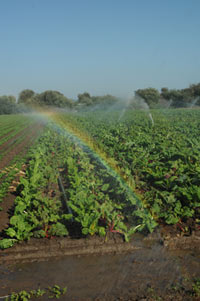
Speculation about what climate change will do to American agriculture has evolved considerably in the last decade. One of the reasons the CCSP report has garnered so much attention-the New York Times hailed it as a “landmark” report in a front-page article-is the highly confident, detailed character of its conclusions. According to the authors, from 2040 to 2060, average water flows from rainfall in the West are likely to decrease by a minimum of 20 percent-an enormous potential reduction. They warn that weather extremes will occur more often, including heat waves, cold snaps, wind, flooding, and fires; that average temperatures will rise, as will the concentration of CO2 in the atmosphere; and that the spread of nonnative plants, weeds, and insect pests will threaten agriculture, forests, and ecosystems. “It is very likely that the Earth will experience a faster rate of climate change in the 21st century than seen in the last 10,000 years,” they wrote.
So what does climate change mean for the South Coast? The answer isn’t immediately apparent, partly because comprehensive research on the ways the greenhouse effect will alter horticulture-which comprises most of the South Coast’s agriculture-has yet to be conducted, partly because Santa Barbara County is home to many distinct microclimates, and partly because what harms one crop may very well benefit another. Studies have consistently demonstrated, for example, that rising average temperatures could be a boon to citrus and avocado trees, which are sensitive to frosts; however, those frosts are instrumental in killing off the pests that in the spring and summer can decimate annual crops like strawberries.
Nevertheless, the data marshaled by the CCSP report suggests that on balance, the overall consequences of climate change on agriculture in Santa Barbara-and California, generally-will be negative. This becomes apparent as you run down the list of top cash crops. Cattle, the county’s seventh biggest moneymaker, are acutely sensitive to drought, which is virtually certain to occur more frequently and for longer periods as the greenhouse effect intensifies. Apart from cattle, the rest of the county’s agriculture is almost entirely given over to horticulture: fruits, flowers, and vegetables. According to the CCSP, horticulture particularly is vulnerable to climate change because such crops tend to be more fragile than cereals such as grain or corn. Bring on a big drought, and fruit and vegetables wither.
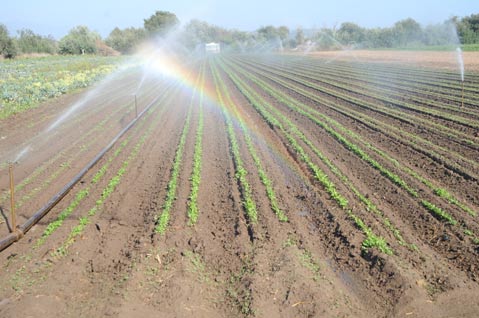
It’s tempting to romanticize California agriculture-a land of gentlemen farmers producing delicious, organic produce. Indeed, longtime Santa Barbarans can remember the days when Goleta and Carpinteria were visions of bucolic paradise-infrequent roads lined on both sides by citrus and avocado orchards. But the truth is that large commercial farms heavily dominate ag in Santa Barbara County. (The same is true for the state at large.) Most of these farms-there are a couple dozen major players-are situated in Santa Ynez, Lompoc, and Buellton. They tend to focus on a narrow suite of highly profitable crops and farm them relentlessly. It is because of these farms that Santa Barbara strawberries brought in $230 million in revenue last year, followed by smaller but still substantial figures for (in order of value) broccoli, wine grapes, head lettuce, and cauliflower.
The cash crops on these farms need different things to flourish-different amounts of water, different amounts of heat and cold, different levels of atmospheric carbon dioxide and nitrogen. But all are vulnerable to climate change. Consider: For an annual fruit or vegetable crop to taste and look good, a farmer will need to have a cold winter with a few frosts to kill off the pests that can decimate berries in the spring and summer. However, the frosts can’t be too strong or come too late; anytime after mid March, and there is the risk of berries freezing. On April 21, a major frost hit most of northern Santa Barbara County, seriously damaging wine grapes and pistachio crops; if climate projections are correct, such frosts will occur with sharply increasing frequency in years ahead.
For South Coast farmers, one of the most alarming climate projections is the probability that as the atmosphere warms, rain will come increasingly in brief, heavy showers. Santa Barbara County has exceptionally fertile soil, but it is also intensely vulnerable to erosion, something that rain showers would exacerbate. On the flipside, any prolonged heat wave will be problematic for fragile fruit crops, especially wine grapes. And there are subtler problems, too. Recent studies conducted by the USDA have found that CO2 enrichment-a central cause of the greenhouse effect-will strongly favor weeds and invasive plants over food crops. The same studies suggest that glyphosate, the most widely used herbicide in the United States, loses its effectiveness on weeds grown at increased CO2 levels.
Looming over all of these projected problems, however, is the likelihood that the most devastating potential consequence of climate change will be a sharp reduction in the world’s supply of freshwater-not a good portent for Santa Barbara.
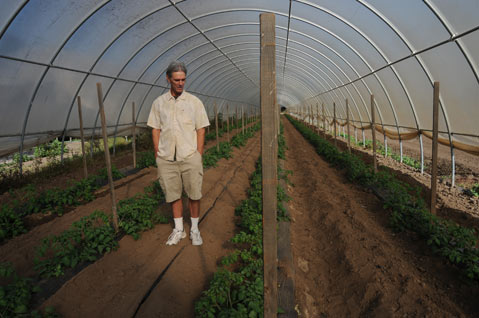
The Edge of Disaster
Whiskey is for drinking, water is for fighting over, wrote Mark Twain. Californians have a long and vibrant history of proving his point. In Cadillac Desert, the definitive history of water in the western U.S. in the 20th century, Marc Reisner describes a century of efforts to maximize water resources; resources, he argued, that fundamentally are too small to meet demand. “Westerners call what they have established out here a civilization, but it would be more accurate to call it a beachhead,” he wrote. “And if history is any guide, the odds that we can sustain it would have to be regarded as low.”
California’s water problems are worse today than ever before. The flow of the Colorado River, from which Southern California gets a substantial portion of its water, is declining steadily. The same kind of depletion is taking place in the Sacramento Delta, the largest single source of freshwater in the state. Groundwater-much of it fossil water that cannot be replenished-is being sucked dry. (So desperate has the situation become that operations in the Central Valley drill as deeply as one vertical kilometer). Looming over all of this is the state’s astronomical population growth, which is projected to increase from 37 million people to nearly 50 million by 2040.
“We are teetering on the edge of disaster right now,” said Sam Frye, a longtime Montecito citrus and avocado farmer. “We haven’t planned for the future in the last 30, 40 years, and the population has outstripped the water supply.” Frye is a past president of the Santa Barbara County Farm Bureau and currently sits on the board of the Montecito Water District. He believes the state needs to embark on a massive crash investment program in water infrastructure-rain catchments, peripheral canal building around the Delta, reservoir expansion, and other ameliorative measures. He’s not alone. Governor Arnold Schwarzenegger has been trying to push a $9 billion water bond through the state Legislature for more than a year. But one problem could confound even the most rigorous action in infrastructure and conservation planning, and that is the steady disappearance of the Sierra snowpack.
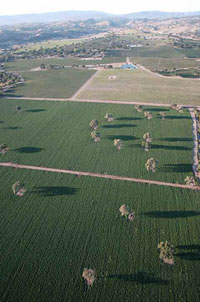
It is well known that the world’s storehouses of ice are melting away, from shelves and sheets in Greenland and the North and South poles to glaciers in the world’s major mountain ranges. The Sierra Nevada is no exception. Last year, the snowpack was 37 percent smaller than normal and, according to a host of recent studies, as temperatures rise this reduction is going to become the rule, not the exception. Indeed, two studies, one published by UC Berkeley and one by Purdue University, have projected that by 2050, global warming will have diminished permanently the snowpack by up to 50 percent. By 2100, the figure rises to 90 percent.
The snowpack is absolutely crucial to California, both because it maintains an enormous volume of freshwater and because it essentially acts as a massive natural reservoir, collecting precipitation during the winter and gradually releasing it throughout the summer. So it’s not surprising that the snowpack projections have caused alarm in the scientific community. “It’s hard to overstate how dramatic these findings are,” said Erin Rogers, an outreach coordinator with the Union of Concerned Scientists, a national research and lobbying organization. “By the end of the century, we could lose virtually all of the Sierra snowpack”-an eventuality so potentially harmful in its scope, she said, it’s difficult to imagine.
Perversely, for a part of the world deprived so consistently of sufficient supplies of freshwater, Santa Barbara agriculture is inordinately thirsty compared with the rest of the country. Some county cash crops are thirstier than others-perennials like avocados and wine grapes drink less and are better at storing water than annuals like strawberries and lettuce. But the advantages are small. Moreover, any long-term water shortage will be worsened if it’s accompanied by heat, since one of the ways to protect sensitive crops-such as strawberries or chardonnay grapes-from hot weather is to irrigate them constantly. Since the lion’s share of the county’s agriculture is grown inland, away from coastal breezes and fog, this poses a serious problem.
In the last year or so, water issues have started getting more attention, on both the media and policy levels. In early August, Senator Dianne Feinstein harangued Sacramento lawmakers for refusing to support Schwarzenegger’s water bond, setting off a high-visibility discussion in the press about the proposal. But while the subject hasn’t yet attained an atmosphere of urgency in the public, scientists, government officials, and policy experts are given increasingly to grim prognostications about the state’s future. And it goes without saying that their concern is matched, if not exceeded, by virtually everyone in the agriculture community. “Water is an amazing concern,” Gillette said. “Everybody is very, very concerned about water. We have some advantages over other parts of the U.S., but, if you have no water, you’re not growing anything.”
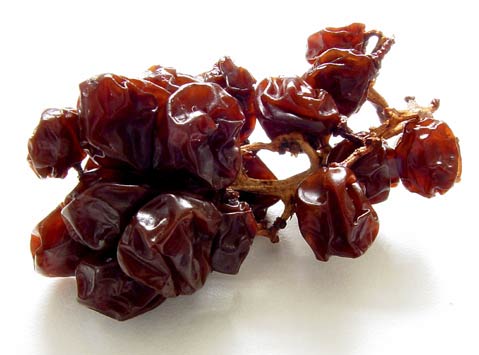
Dead on the Vine
Unlike the federal government-which under the Bush administration has fought to resist, delay, or prevent serious efforts to mitigate climate change-California legislators have moved aggressively to reduce the state’s fossil fuel use. California is the world’s 12th largest emitter of carbon dioxide, and the state’s proactive stance on global warming has received a warm reception internationally.
However, the agriculture industry is only responsible for a small proportion of the state’s overall greenhouse gas emissions-about 8 percent. It’s consoling to imagine that if farms grow more produce without using carbon-intensive petrochemicals and sell these organic wares locally, global warming will diminish. Unfortunately, that’s neither likely to happen-California profitably exports a huge amount of produce to the rest of the country-nor, in fact, possible. Most scientists agree that the only way to curb global warming measurably is with international treaties and laws that require industries and governments to reduce fossil fuel emissions. Buying organic broccoli at the Farmers Market isn’t going to do it.
Since the California agriculture industry can’t, in any meaningful sense, diminish global warming on its own, and since significant climate change is inevitable no matter how the world cuts emissions, farmers must find ways to adapt. Unfortunately, it’s hard to guess what those adaptation strategies might look like. Global warming will exacerbate the problems farmers already face-temperature swings, storms, heat waves, drought, wind, weeds, insects, and bacterial infections. There is no question that the low-cost fossil fuels, plant breeding, and technological innovation that have been dedicated to alleviating these problems for the last century and a half have met with extraordinary success. But there are some climate conditions that can’t be solved by human ingenuity. Many factors determine yearly agriculture revenue in California: market prices, energy costs, water costs-the list goes on. But each of these will be exacerbated heavily by a wholesale shift in the state’s climate.
And it is now certain that such a shift is occurring. Though the U.S.-alone among industrialized Western countries-still retains a statistically relevant proportion of citizens who are skeptical about the greenhouse effect, the scientific debate about the existence and danger of human-induced climate change has closed. One of the reasons that the CCSP report is of such interest to farmers, policymakers, and concerned citizens is that its projections represent the least of what is likely to occur in the immediate future. This point was emphasized by Peter Backlund, one of the report’s lead authors. Backlund is the director of research relations at the National Center for Atmospheric Research, in Boulder, Colorado. “What makes [the CCSP report] unique is that it’s focused on the here and now,” he said. Backlund pointed out that there is now more carbon dioxide in the atmosphere than at any point in the last 650,000 years, and that even if all human-induced carbon emissions stopped today, it will continue to get hotter throughout the course of the century. “Much of the climate change that’s going to happen in the next two to three decades is going to be based on emissions that have already occurred,” he said. “We’re quite confident that the kind of impacts we outline for the next couple of decades represent the minimum of what we’re likely to see.”

So what’s the future going to look like? It’s difficult to say. Climate change cannot be put into a bar graph, except in the most general sense. Two things are certain, however. The first is that effective action to mitigate it-which is to say, meaningfully reduce the world’s fossil fuel emissions-is going to require international laws and treaties. Whether you think that’s likely to occur depends on your capacity for optimism. The second is that climate change is winding itself into all of the problems the world faces-even agricultural production in Santa Barbara, however prosaic that may appear on a global scale.
Of course, to Santa Barbarans, there’s nothing prosaic about South Coast agriculture. Last year it accounted for 10 percent of the county’s total economy, and if it is diminished as a result of global warming, the fiscal consequences will be felt beyond the borders of the agriculture industry. County tax coffers will be reduced, food prices will rise, and many family-owned businesses may be forced under. With water rates rising quickly, energy costs rising faster, and the juggernaut that is California housing development marching inexorably forward, it’s no surprise that three farmers interviewed for this story used, separately, the phrase “perfect storm” to describe what they see when they look at the challenges besetting South Coast agriculture.
Any story about farming is a story about flux. The weather changes daily; the water supply fluctuates annually; a disease spreads, weeds proliferate, insects infest. Change is what farmers do. But what science is telling us is that global warming is mobilizing changes-immense, transnational changes-that will not change back. It is going to get hotter; the question is not for how long but to what degree. There will be less water in the American Southwest; the question is not for how long, but how much less. The rituals of science dictate that scientists hedge their research with cautions and qualifiers. They do not normally try to sell the public on their findings. But they are now, and their message is climate change will permanently reconfigure industries, ecosystems, economies, and crops in ways never before seen. It will hit even Santa Barbara’s own golden corner of the world, and it will do so sooner than we imagine.
“I’ve been working on climate change a long time,” Backlund said. “It’s been part of the fabric of my everyday life. But to do a project like this, you grab all the papers over the last few years and look at them altogether-just the sheer weight of the information about what’s happening right now really startled me. To take a step back and realize how many changes are happening right now as a consequence of climate change was startling. And scary, frankly.”



